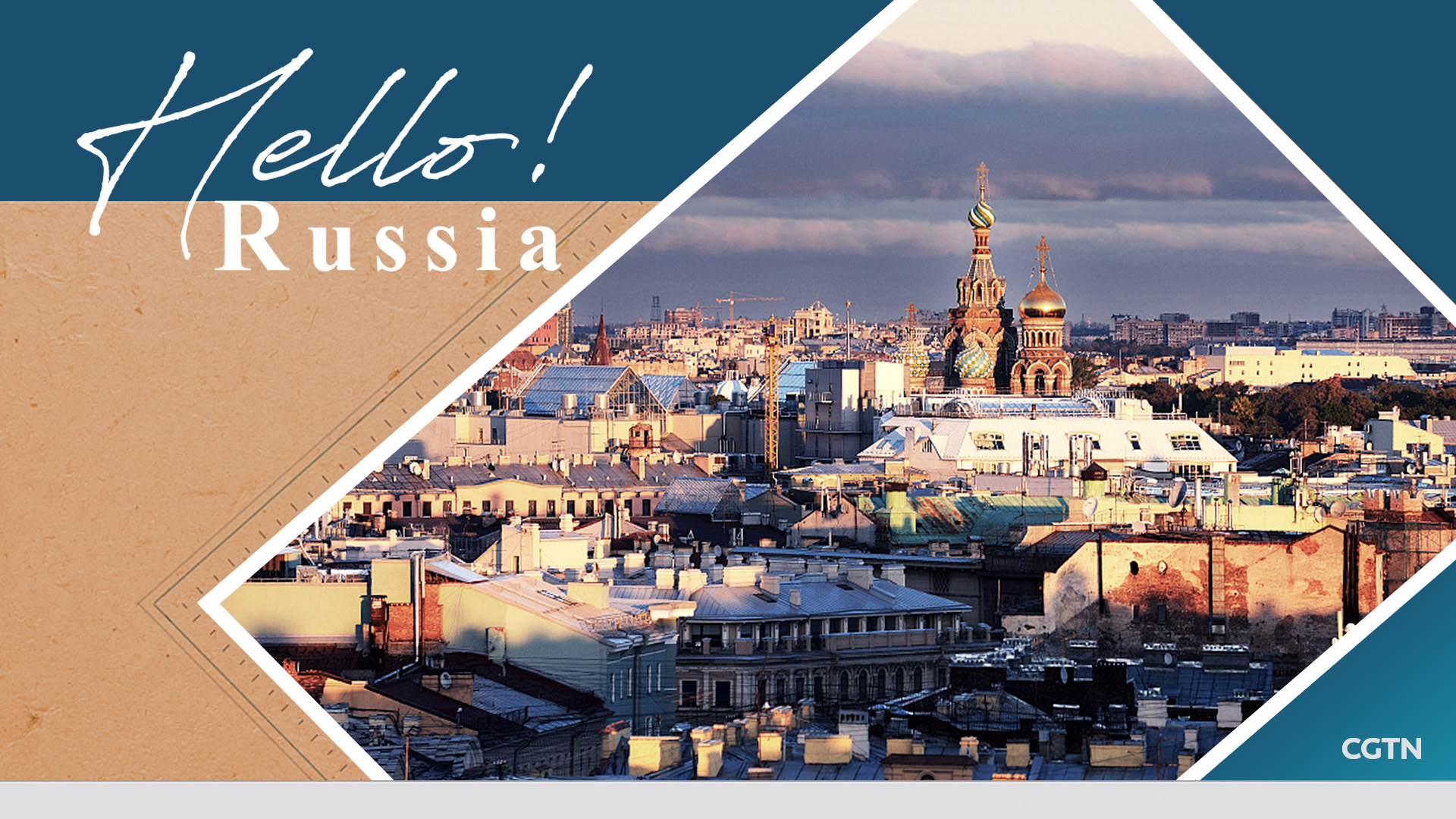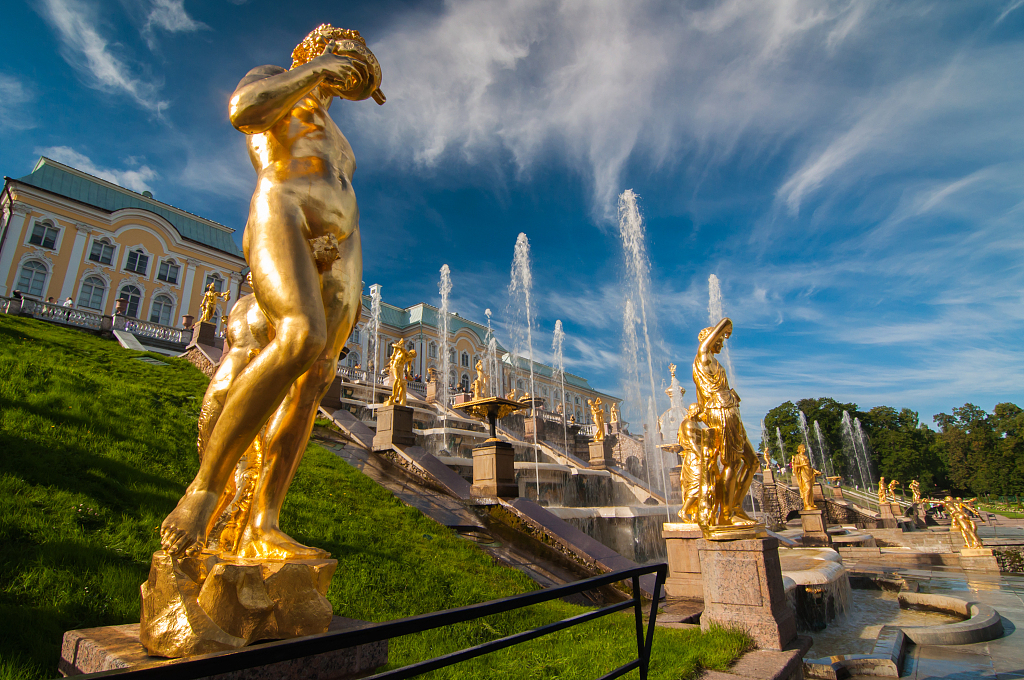Saint Petersburg is a city not short of stories. In roughly 300 years, it has been renamed three times, survived three Russian revolutions and two world wars. It saw the rise and fall, and rise again, of Russia, witnessed incredible tales of love and romance as well as hardship and perseverance. As a fabled city, it produced a host of legendary characters that steered the fate of the empire and the nation. Four stand out in the unique ways they shaped Saint Petersburg.
Peter the Great (1682-1725)
"I have conquered an empire but I have not been able to conquer myself."
At age 31, Tsar Peter the Great finally achieved what he had long dreamed of – opening a northern seaport for Russia that would allow the greater flow of goods and ideas from a technologically-advanced Europe. It was the first step in putting Russia on the map and put major European powers on notice. After years of battling superior Swedish forces, the Russian Empire successfully took control of areas surrounding the Neva River. He named the new city Saint Petersburg, after his patron saint.
Initially, Saint Petersburg consisted only of Peter and Paul Fortress, but a period of rapid development soon followed under the manic work schedule of Tsar Peter. Standing at over two meters, his tall statue is filled with limitless energy and motivation that often stun those around him.
What stood out the most was perhaps Peter's curiosity, as his knowledge spanned from diplomacy and law to business and education, while his skillset ranged from making a shoe to building a ship. To prepare for reforming the military, he served in both the navy and army, and learned to use every weapon.
![]()
Taking inspiration from the Versailles in Paris, Peter the Great commissioned the construction of Peterhof in 1714. The Petrine Baroque style of the architecture, designed by Domenico Trezzini, became widely popular in Saint Petersburg. /VCG Photo
Taking inspiration from the Versailles in Paris, Peter the Great commissioned the construction of Peterhof in 1714. The Petrine Baroque style of the architecture, designed by Domenico Trezzini, became widely popular in Saint Petersburg. /VCG Photo
To construct his "window to Europe," Peter the Great conscripted 40,000 men every year, including peasants, soldiers and even the wealthy. They were driven hard and many died due to the unforgiving climate. As the city expanded outward from Peter and Paul fortress, swamps were drained under the supervision of German and Dutch engineers.
Taking inspiration from Venice, the tsar proposed boats as a primary mode of transportation for the new capital. Peter didn't make an effort to hide his admiration for Europe, and recruited its scientists, shipbuilders and architects to contribute to his modernization effort. Eventually, a large number of these initial city builders immigrated to Saint Petersburg.
After a decade of non-stop construction, a city began to emerge. Aristocrats and common people alike soon became fond of the gracious and stylistic courts and churches. As more people began to arrive on their own, a literary and artistic movement flourished, which helped produce world-class writers and artists, solidifying Saint Petersburg's status as a major cosmopolitan capital.
Fyodor Dostoevsky (1821-1881)
"What is hell? I maintain that it is the suffering of being unable to love."
Although the city evokes grandeur through its palatial cathedrals and inspires awe through its art and religion, people have come to love the city through Russian literature. Nikolai Gogol, Leo Tolstoy and Fyodor Dostoyevsky were all residents of Saint Petersburg where they produced much of the classics still read today. The city transcends space and time through their literary depictions, reaching generations of readers around the world.
19th-century Russia was a time of cultural renaissance. European forms of art mixed with a Russian temperament took hold of the country, and music and ballet flourished to heights unforeseen.
Students of literature a century later may have a different view of the era through Dostoyevsky's descriptions of the ordinary yet spiritual lives of Russians in Saint Petersburg.
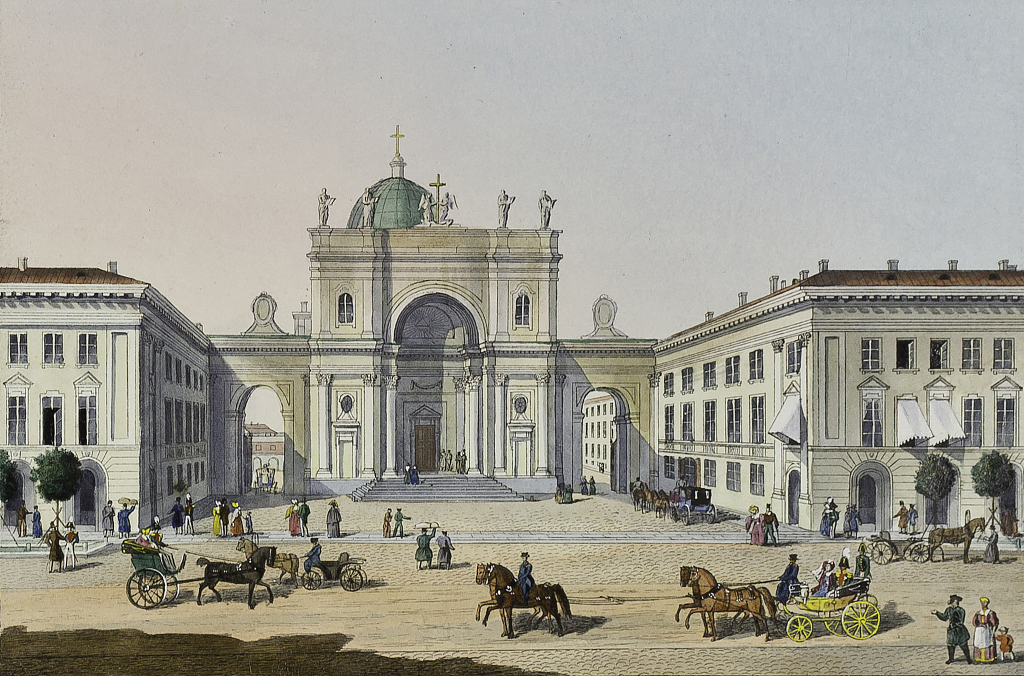
The Catholic Church of St. Catherine in Saint Petersburg. Found in the collection of Bibliothèque municipale de Nancy. /VCG Photo
The Catholic Church of St. Catherine in Saint Petersburg. Found in the collection of Bibliothèque municipale de Nancy. /VCG Photo
He not only captured the city down to the street or square, but the multitudinous aspirations imbued in the people of that cultural capital. The destitute law student Rodion Raskolnikov in Dostoyevsky's "Crime and Punishment" overhears gossip in the city's Hay Market square that leads him to contemplate murder of a pawnbroker for money. He is visited by his friend and sister in his sunless quarters, a real residential building now called Raskolnikov's House.
The protagonist embodied an idealistic youth led astray by poverty in a large city, while his atonement and subsequent spiritual enlightenment speaks to the Russian character, which places humility before faith.
Vladimir Lenin (1870 -1924)
"Sometimes – history needs a push"
In October 1917, Saint Petersburg had been renamed Petrograd or “Peter's City," and braced for another harsh winter. Cold winds brushed across the faces of the poor and starving like a dagger. The city had descended into chaos after the abdication of Tsar Nicolas II, effectively ending 300 years of Romanov dynastic rule. The post-tsarist provincial government exercised little control, while gangs and criminals roamed the streets. A 47-year-old Vladimir Llyich Ulyanov, who had adopted the pen name N. Lenin 16 years before, sensed it was time to start a revolution.
A loud boom shook the sky on the night of October 25, as the Aurora cruiser – seized by Lenin's Bolsheviks – fired a blank shell, giving the signal for the proletariat masses to take over the Winter Palace. The mobs faced little resistance and quickly filled the opulent hallways in a rage of looting and vandalizing. Lenin soon declared victory and announced the formation of a new government. However, much of the territory did not recognize the Bolsheviks as clashes between the remaining tsarist forces and the Red Guards soon followed, igniting the Russian Civil War. In March 1918, Russia's capital returned to Moscow from Saint Petersburg.
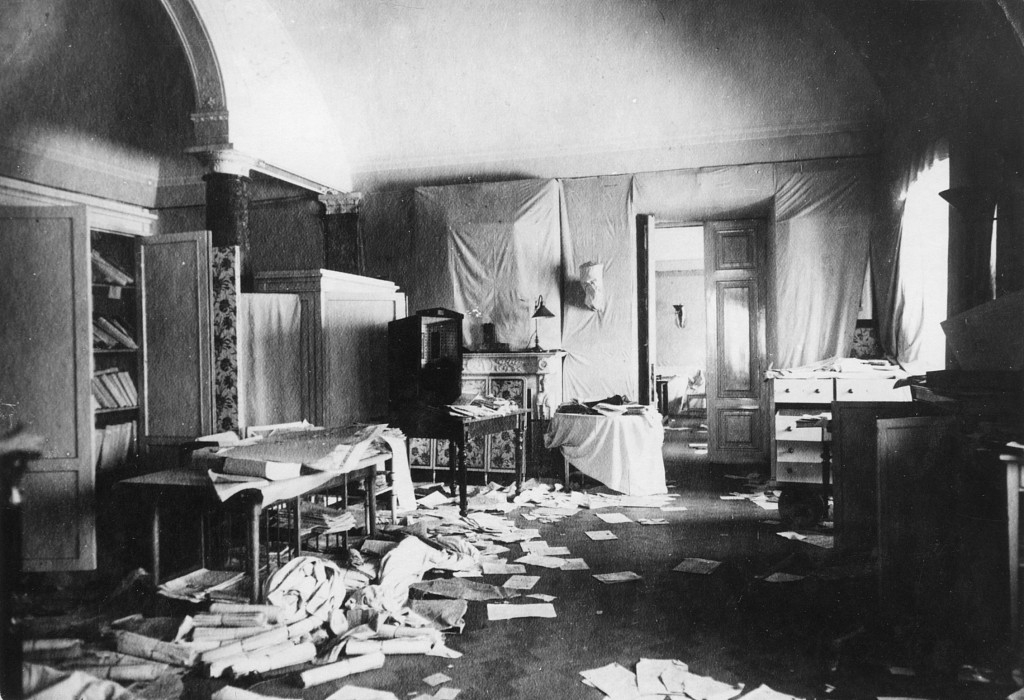
The Bolsheviks stormed and Winter Palace during the October Revolution. The picture shows the aftermath of looting and vandalizing by the mobs. /VCG Photo
The Bolsheviks stormed and Winter Palace during the October Revolution. The picture shows the aftermath of looting and vandalizing by the mobs. /VCG Photo
During this time of great turmoil, Saint Petersburg experienced a mass exodus, as hordes of clerks and ministers relocated to Moscow. Aristocrats and the wealthy fled the city with whatever valuables they could hold onto. Those remained often ended up in corpses: four grand dukes including the tsar's uncle were executed by revolutionaries in the Peter and Paul Fortress. Flyers to reeducate the masses about the virtues of Marxism replaced street signs.
The Ekaterinsky Canal, named after Catherine the Great, was changed to Griboyedov Canal as Bolshevik historians deemed the Russian playwright an honorary Marxist. Just about anything that reminded people of the old ways were uprooted and repurposed towards the movement. Three years later, Lenin and the Bolsheviks emerged victorious in the civil war, signaling the beginning of the Soviet Union era.
Vladimir Putin (1952 – present)
"Everything will probably never be okay. But we have to try for it."
Saint Petersburg is rife with nostalgia for Vladimir Putin. It's the city where he was born, married, and started his political career.
Putin, arguably one of the most powerful men in the world, was born to an ordinary family in 1952 and attended the oldest university in Russia – Saint Petersburg State University. He worked for the KGB in East Germany after graduation. His foray into politics starting from 1990 when he returned was deeply rooted in his career as a spy in the renowned intelligence agency building near the Neva River.
Following the coup against then president of the Soviet Union Mikhail Gorbachev in the summer of 1991, Putin resigned from the KGB, as he did not agree with what had happened and did not want to be part of the new administration. In 1994 he became the deputy mayor of Saint Petersburg, working with his boss Mayor Anatoly Sobchak before moving to Moscow two years later and joining the presidential staff under then-President Boris Yeltsin.
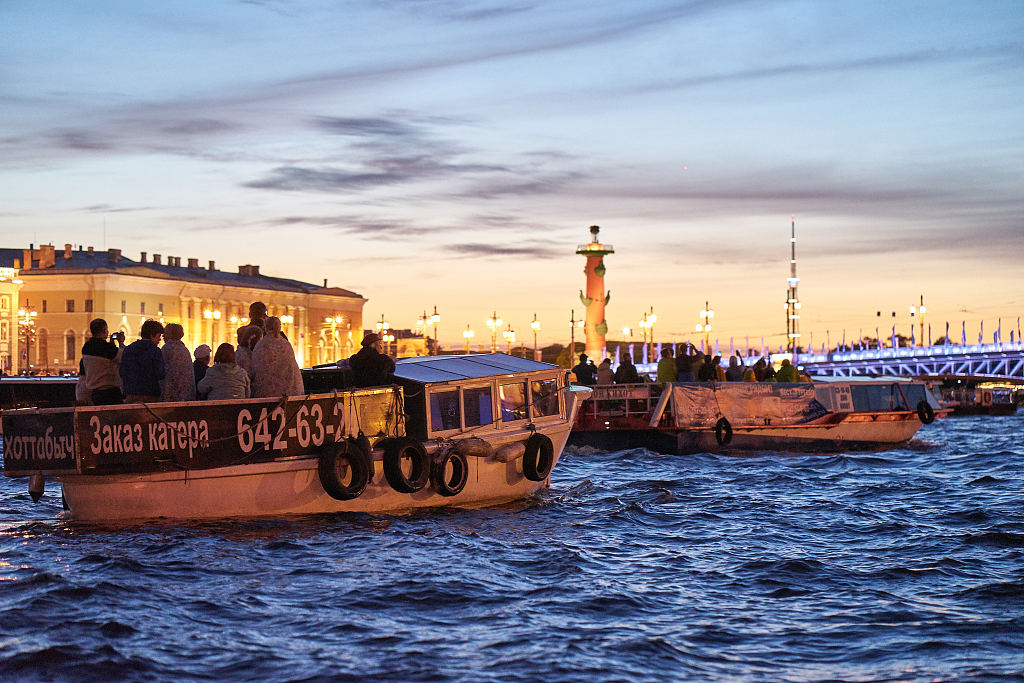
A view looking at the Neva River. /VCG Photo
A view looking at the Neva River. /VCG Photo
In the 1990s, Saint Petersburg during the 1990s sifted through an age of chaos and change. The fall of the Iron Curtain left a trail of economic destruction, precipitating a transition to a market economy. Over the decade, the private sector boomed, with the number of its employees growing more than six-fold between 1990 and 2001, and labor forces flowed from manufacturing to trade and services. The economic structural changes also caused prohibitive unemployment rates. And those who used to be in power became oligarchs and a lot of infighting unfurled amid a multitude of turf battles.
What the turbulent decade failed to change is the Russian people's passion for art. According to a report by the Saint Petersburg Committee of State Statistics, theater, museum and cinema attendance rates remained between 12 to 15 percent in the 1990s.
Apart from the traditional passion for classical art, Saint Petersburg also embraces the avant-garde, or what was called rebellious art and music back then. The city is the birthplace of Russia's rave subculture, which took shape in the late 1980s and the early 1990s. The end of the Soviet Union further opened the gateway to the European continent; the last Soviet generation traveled to Western Europe and brought back different cultural forms encompassing the young generation's universalism.
The tumultuous history spanning over three centuries has made Saint Petersburg an object of fascination. The Neva River tells a never-ending story of contemplation, love and hope.

